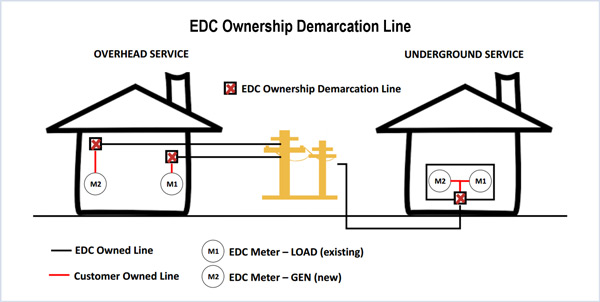By Rory D. Sweeney
VALLEY FORGE, Pa. — PJM invited two distributed energy resource developers to explain their operations and presented a case study of its own at Monday’s special session of the Market Implementation Committee. The presentations elicited concern from electric distribution companies, who asked that rules be implemented that keep them informed when customers want to install such systems.
“We simply need to know what’s happening before it happens and not after the fact. That will give us the opportunity to determine what needs to be done,” FirstEnergy’s Bruce Remmel said.
Calpine’s David “Scarp” Scarpignato said stakeholders could benefit from EDCs providing information to PJM on such interconnections. “A lot of small [projects] can add up to big numbers,” he said. “It seems to me like the notification should go two ways.”
PJM discussed a recent visit by staff members to Hopewell Valley Central High School in Pennington, N.J., where Public Service Electric and Gas has installed a solar and battery system. The 580-kWh Hopewell battery is an “in front of the meter” system but doesn’t qualify as an “energy storage resource,” PJM staff said, because it is primarily a backup power system for the school during an outage and therefore doesn’t fit the definition of a storage resource. Instead, it’s accounted for under “station power” rules, even though it provides regulation, capacity and energy services to the RTO.
PJM’s Andrew Levitt, who led the presentation, explained that a resource can be designated either in front of the meter — meaning it’s able to provide capacity and energy services — or behind the meter, meaning it can be used to net against load for wholesale transmission, capacity and ancillary services charges. The same megawatts cannot be used for both simultaneously, he said.
Drew Adams of A.F. Mensah and Adesh Harripersad of Distributed Asset Solutions highlighted how their businesses have handled installations of both types of resources in PJM.
It was A.F. Mensah’s problem statement and issue charge that precipitated development of the special sessions, borne out of the challenges faced with PJM’s policies on how systems combining batteries and renewables must be interconnected. (See PJM Considering Injection Rights for Demand Response.)
The company has moved forward with projects using the existing rules while they’re being discussed in this stakeholder process.
Adams highlighted some of the challenges and experiences when complying with all existing rules. Adams said his company paid a $500 application fee for each of 20 installations and that the installations are aggregated in PJM’s models as a single 0.1-MW market resource. He presented diagrams showing how the projects require two separate electric service lines to an end customer site: one for the existing service line including behind-the-meter solar panels, and a new service line for the battery storage system so its capabilities can be sold directly into PJM. The battery system acts independent of the customer load and solar in normal operation and is then connected to the load and solar through redundant switch gear during a bulk grid outage.
He explained that the systems have five meters, each providing different information to different recipients. FirstEnergy’s Ed Stein said that creates concerns because partial information may make it impossible to fully understand what’s going on with a system.
“Ultimately, I think there will be a lot more information sharing between EDCs, transmission owners [and] PJM,” Stein said. “We’re going to have to come up with an information-sharing paradigm that works for everybody. We may find ourselves that not one single entity has all of the information or ownership of all information at its disposal to give. … We’ve got a lot to consider with information here: who’s going to have it, who’s going to provide it, who’s going to be able to see it and access it and understand it.”
Adams said his company is supportive of those discussions.
Harripersad discussed the coordination issues that make project development and construction difficult. He works with funding provided by True Green Capital Management to develop photovoltaic solar arrays throughout the country. Even with long lead times — with delays created by the need to secure everything from state environmental approvals to local construction permits — projects are often a rush at the end, he said.
“All these things add up to, literally, down to the wire; you have three months to build everything,” he said. “The big thing is getting our projects interconnected.”
He praised project coordination among stakeholders within PJM’s footprint. “This coordination is unheard of in any other [RTO or ISO] territory in the country,” he said. He referenced a 16.7-MW solar rooftop project with the Port of Los Angeles in which he said CAISO has “no involvement.”
Work began on collecting stakeholder interests and potential solutions but didn’t get far, only advancing to design component 1.2. PJM staff assured this would be a main focus for the group’s next meeting.




